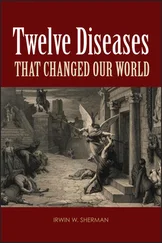Francis Anstie - Neuralgia and the Diseases that Resemble it
Здесь есть возможность читать онлайн «Francis Anstie - Neuralgia and the Diseases that Resemble it» — ознакомительный отрывок электронной книги совершенно бесплатно, а после прочтения отрывка купить полную версию. В некоторых случаях можно слушать аудио, скачать через торрент в формате fb2 и присутствует краткое содержание. Жанр: foreign_antique, foreign_prose, на английском языке. Описание произведения, (предисловие) а так же отзывы посетителей доступны на портале библиотеки ЛибКат.
- Название:Neuralgia and the Diseases that Resemble it
- Автор:
- Жанр:
- Год:неизвестен
- ISBN:нет данных
- Рейтинг книги:5 / 5. Голосов: 1
-
Избранное:Добавить в избранное
- Отзывы:
-
Ваша оценка:
- 100
- 1
- 2
- 3
- 4
- 5
Neuralgia and the Diseases that Resemble it: краткое содержание, описание и аннотация
Предлагаем к чтению аннотацию, описание, краткое содержание или предисловие (зависит от того, что написал сам автор книги «Neuralgia and the Diseases that Resemble it»). Если вы не нашли необходимую информацию о книге — напишите в комментариях, мы постараемся отыскать её.
Neuralgia and the Diseases that Resemble it — читать онлайн ознакомительный отрывок
Ниже представлен текст книги, разбитый по страницам. Система сохранения места последней прочитанной страницы, позволяет с удобством читать онлайн бесплатно книгу «Neuralgia and the Diseases that Resemble it», без необходимости каждый раз заново искать на чём Вы остановились. Поставьте закладку, и сможете в любой момент перейти на страницу, на которой закончили чтение.
Интервал:
Закладка:
I. In the first place, it is universally the case that the condition of the patient, at the time of the first attack, is one of debility, either general or special. I make this assertion with confidence, notwithstanding that Valleix, and some other very able observers, have made a contrary statement. In the first place, it is certainly the case that the larger half of the total number of cases of neuralgia which come under my care are either decidedly anæmic, or else have recently undergone some exhausting illness or fatigue; and if other writers have failed to see so many neuralgic patients in whom these conditions were present, it must certainly be because they have limited the application of the term "neuralgia" within bounds which are too narrow to be justified by any logical argument; as will, indeed, be shown at a later stage. On the other hand, although a considerable number of neuralgic patients have an externally healthy appearance, as indicated by a ruddy complexion and a fair amount of muscular development, it cannot be admitted that these appearances exclude the possibility of debility, either structional or functional, of the nervous system. The commonest experience might teach us that, so far from the nervous system being invariably developed with a corresponding completeness and maintained with a corresponding vigor to those which distinguish the muscular system and the organs of vegetative life, there is often a very striking contrast between these in the same individual. What physician is there who has not seen epileptic patients, in whom mental habitude, a low cranial development, imperfect cutaneous sensibility, and other obvious marks of deficient innervation, were marked and striking features at, or even before, the first occurrence of convulsive symptoms, while the body was robust, the face well colored, and the muscular power up to or beyond the average? Now, it will invariably be found, on carefully sifting the history of apparently robust neuralgic patients, that they, too, have given previous indications of weakness of the nervous system: thus, women, who, after a severe confinement attended with great loss of blood, are attached with clavus hystericus or with migraine ; will inform us that whenever, in earlier life, they suffered from headache, the pain was on the same side as that now affected, and chiefly or altogether confined to the site of the present neuralgia. In a considerable number of cases, also, in which I have been able to observe accurately the events which preceded an attack of neuralgia, it has been found that the skin supplied by the nerves about to become painful was anæsthesic to a remarkable degree; and it is very often the case that a more moderate amount of blunted sensation was perceptible in these parts during the intervals between attacks of pain. A somewhat delusive appearance of general nervous vigor is often conveyed to the observer of neuralgic patients, by reason of the intellectual and emotional characteristics of the latter. Both ideation and emotion are, indeed, very often quick and active in the victims of neuralgia, who in this respect differ strikingly from the majority of epileptics. But this mobility of the higher centres of the nervous system is itself no sign of general nervous strength; which last can never be possessed except by those in whom a certain balance of the various nervous functions is maintained. Much more will be said on this topic when we come to discuss the etiology of neuralgia. Meantime I may content myself with repeating the fact which is indubitably taught by careful observation – that neuralgics are invariably marked by some original weakness of the nervous system; though in some cases this defect is confined strictly to that part of the sensory system which ultimately becomes the seat of neuralgic pain.
Another circumstance is common to all neuralgias of superficial nerves; and, as a large majority of all neuralgias are superficial in situation, this is, for practical purposes, a general characteristic of the disease. I refer to the gradual formation of tender spots at various points where the affected nerves pass from a deeper to a more superficial level, and particularly where they emerge from bony canals, or pierce fibrous fasciæ. So general is this characteristic of inveterate neuralgias, that Valleix founded his diagnosis of the genuine neuralgias on the presence of these painful points. Herein he appears to me to be decidedly in error. I have watched a great many cases (of all sorts of varieties as to the situation of the pain), and I have uniformly observed that in the early stages firm pressure may be made on the painful nerve without any aggravation of the pain; indeed, very often with the effect of assuaging it. The formation of tender spots is a subsequent affair: they develop in those situations which have been the foci, or severest points, of the neuralgic pain. There is however, a point which, though not always, nor often, the seat of spontaneous pain, is nevertheless very generally tender. Trousseau, who criticises unfavorably the statement of Valleix as to the situation of the points douloureux, insists that this tender spot, which is over the spinous processes of the vertebræ corresponding to the origin of the painful nerve, and which he calls the points apophysaire, is more universally present than any of those pointed out by Valleix. I shall hereafter endeavor to show that these spinal points are by no means characteristic of neuralgia; they are present in a variety of affections which were ably described, under the heading of "Spinal Irritation," many years ago, by the brothers Griffin. ["Observations on the Functional Affections of the Spinal Cord," by William and Daniel Griffin. London, 1834] and they are also present with misleading frequency in cases of mere myalgia, such as I shall have to describe at a later stage.
Another characteristic of neuralgic patients in general is, I believe, a certain mobility of the vaso-motor nervous system and of the cardiac motor nerves; but I insist less on this than on the above-named features, because a more extended experience is necessary to establish the fact with certainty. Within my own experience it has always seemed to be the case that persons who are liable to neuralgia are specially prone to sudden changes of vascular tension, under emotional and other influences which operate strongly on the nervous system. The observation of this fact has been made accidentally, without any previous bias on my part, in the course of a large number of experiments made upon individuals free from manifest disease at the time, with Marey's sphygmograph.
Neuralgic attacks are always intermittent, or at the least remittent, in every stage of the disease.
The manner in which neuralgic pain commences is characteristic and important. There is always a degree of suddenness in its outset. When produced by a violent shock, it may, and often does, spring into full development and severity at once, of which, perhaps, the most striking example is the sudden and violent neuralgic pain of the eyebrow which some persons experience from swallowing a lump of undissolved ice. Usually, however, the first warning is a sudden, not very severe, and altogether transient dart of pain. The patient has probably been suffering from some degree of general fatigue and malaise, and the skin of the affected part has been somewhat numb, when a sudden slight stitch of pain darts into the nerve at some point which corresponds to one of the foci hereafter to be particularized. It ceases immediately, but in a few seconds or minutes returns; and these darts of pain recur more and more frequently, till at last they blend themselves together in such a manner that the patient suffers continuous and violent pain for a minute or so, then experiences a short intermission, and then the pain returns again, and so on. These intermittent spasms of pain go on recurring for one or several hours; then the intermissions become longer, the pain slighter, and at last the attack wears itself out. Such is generally the history of first attacks, especially in subjects who are not past the middle age, nor particularly debilitated from any special cause.
Читать дальшеИнтервал:
Закладка:
Похожие книги на «Neuralgia and the Diseases that Resemble it»
Представляем Вашему вниманию похожие книги на «Neuralgia and the Diseases that Resemble it» списком для выбора. Мы отобрали схожую по названию и смыслу литературу в надежде предоставить читателям больше вариантов отыскать новые, интересные, ещё непрочитанные произведения.
Обсуждение, отзывы о книге «Neuralgia and the Diseases that Resemble it» и просто собственные мнения читателей. Оставьте ваши комментарии, напишите, что Вы думаете о произведении, его смысле или главных героях. Укажите что конкретно понравилось, а что нет, и почему Вы так считаете.












